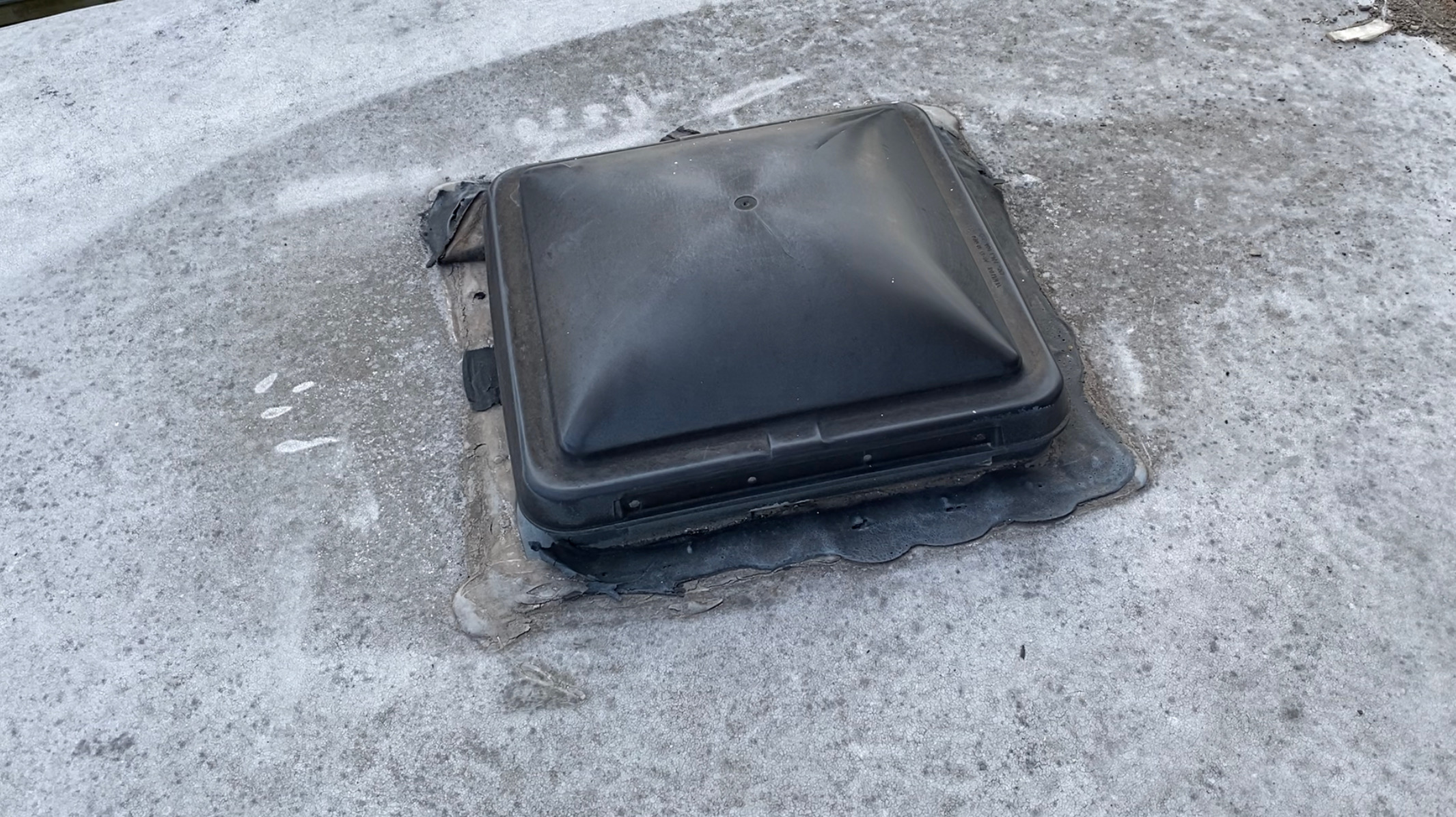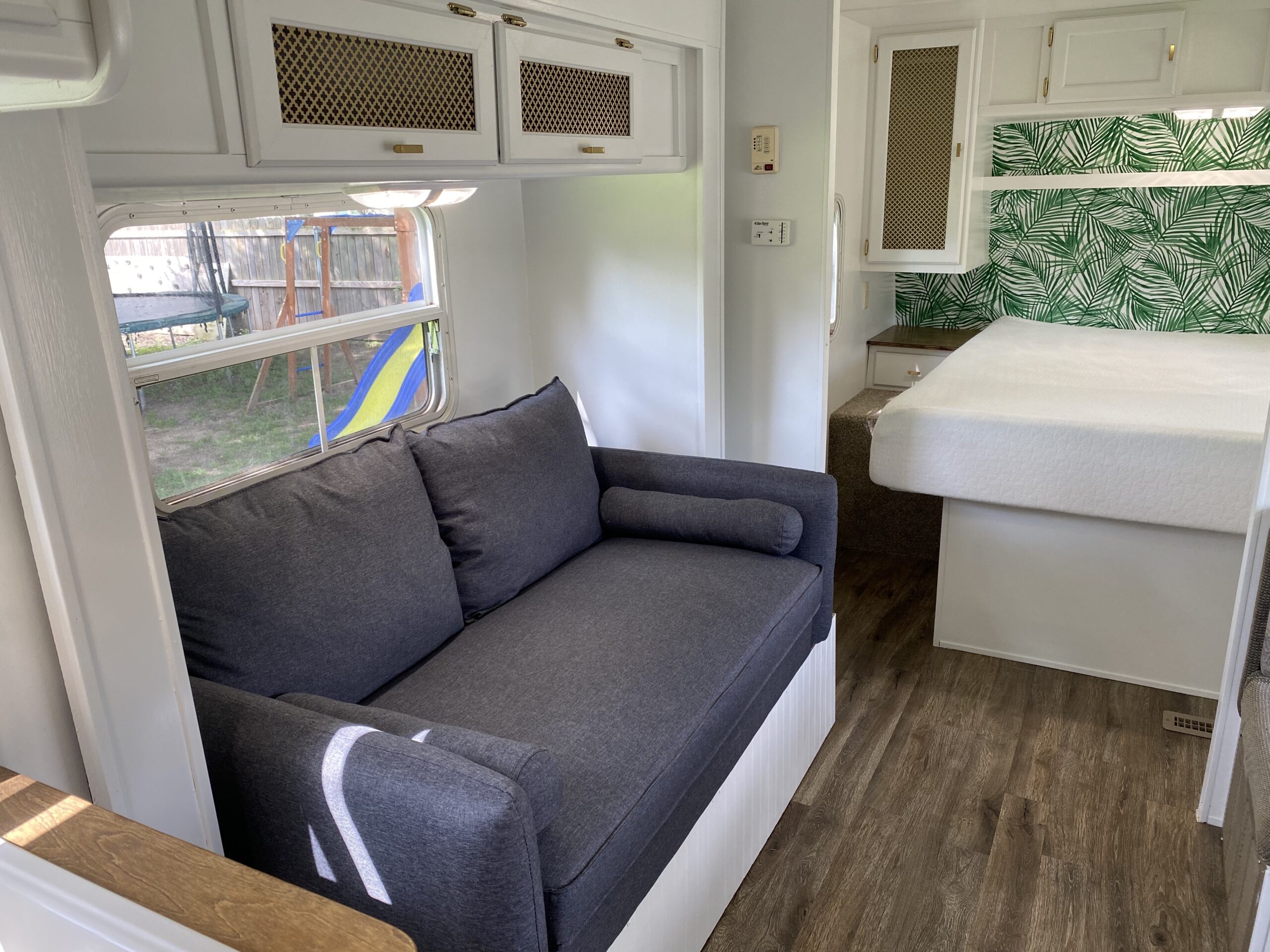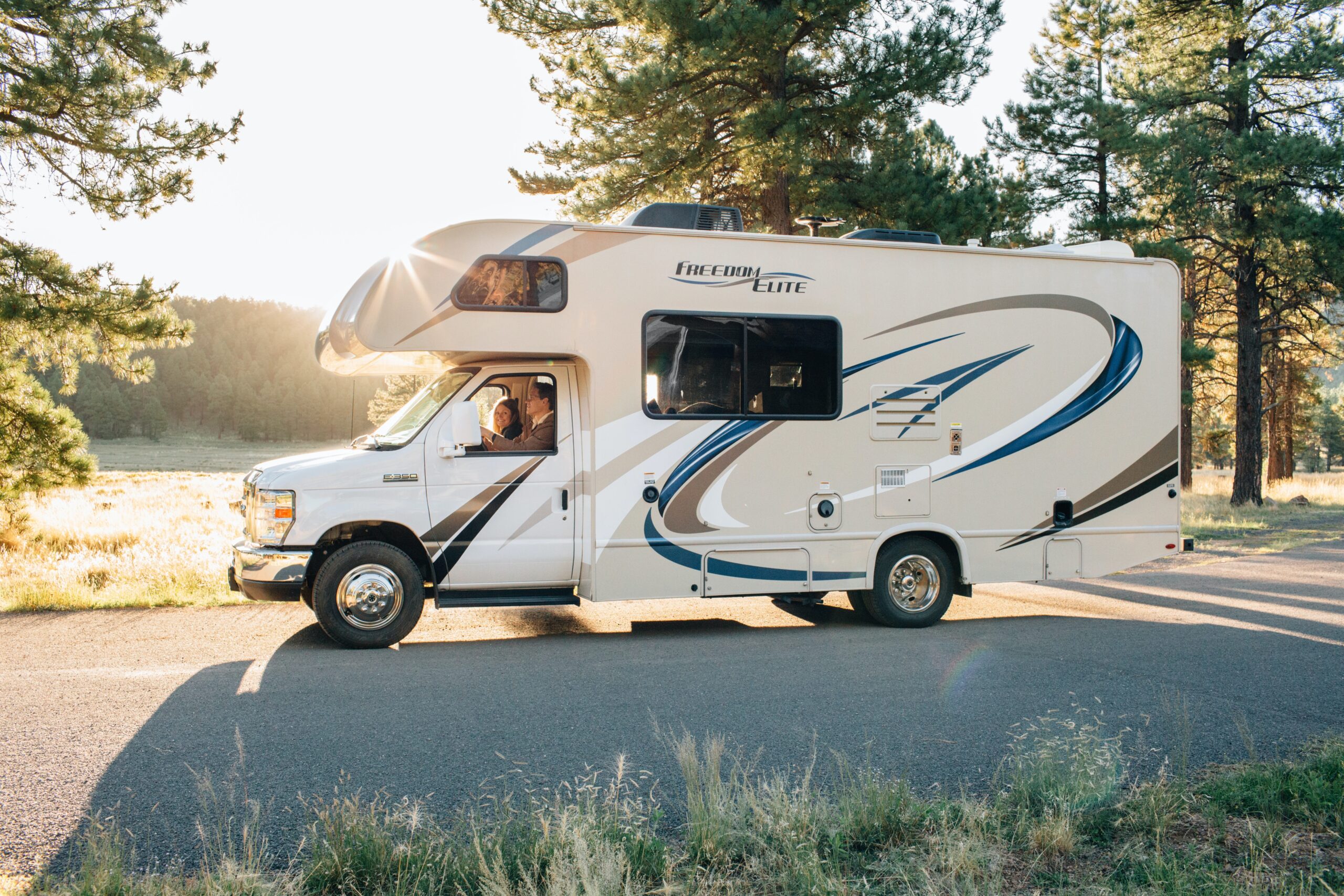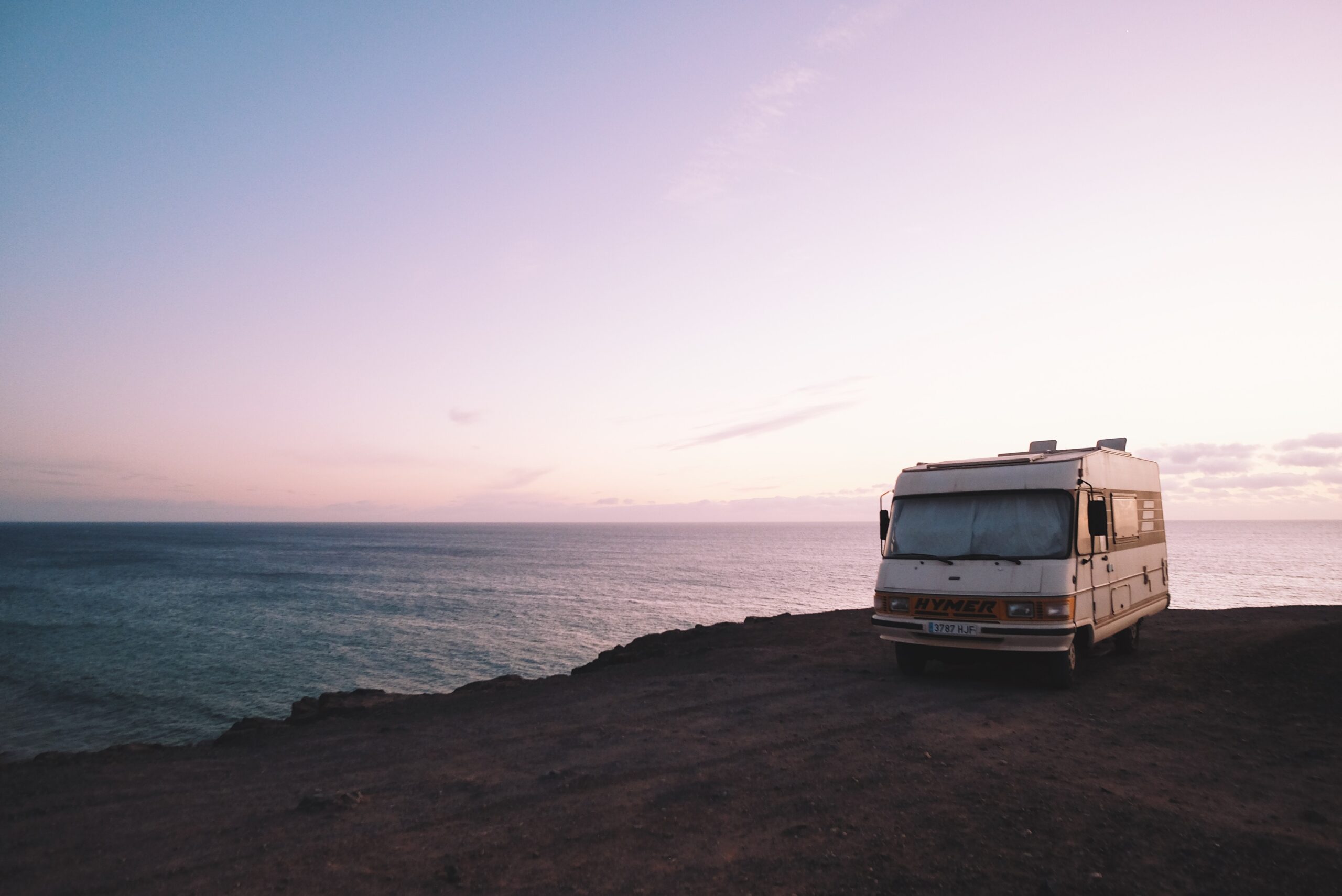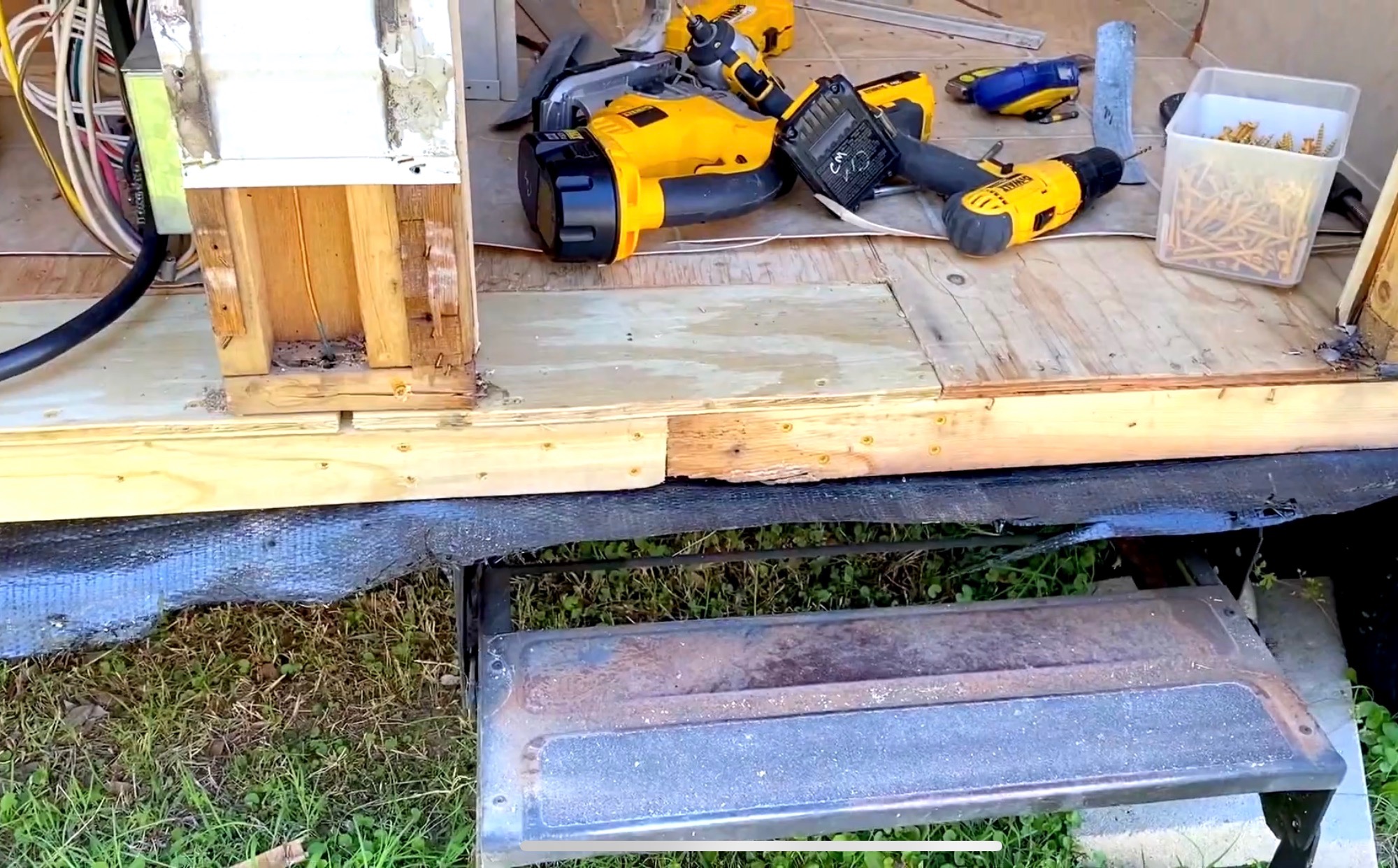Cleaning your RV Roof comes down to choosing the correct method for your type of roof. The key is to avoid harsh chemicals or techniques that could further damage or break down your roof material. Once that is done, regular cleaning and maintenance should keep you on the road.
Keeping your RV roof clean will also ensure that you are inspecting it regularly, which will alert you to any changes that require your immediate attention.
The vast majority of RVs being sold cheaply have had water damage from leaking roofs. Keeping an RV roof clean is essential to the life of your RV.
Most Common Types of RV Roofs
There are a few different types of RV roofs. They are made primarily of the following five types of materials, two of which are rubber in nature. They all can be cleaned with a non-solvent cleaner, but more care should be given to rubber roofs. Always rinse the roofing material very well.
Rubber Roofs

There are two types of rubber roofs on RVs:
- EPDM – Ethylene Propylene
- TPO – Thermal Polyolefin
The issue with this is that most RV owners can’t tell one from the other. Ask most salespeople and watch their eyes glaze over. They won’t know either most of the time. I had no idea either until I had to replace my entire roof.
With that in mind, we’re going to give you some tips on how to tell the difference because they both require different types of care.
How to tell what type RV roof you have
The first thing you can do is check to see if you have the original owner’s manual. Somewhere in this manual, it will tell you what type of roof you have.
It will typically refer to the ‘membrane used’ and then provide you with instructions for cleaning it. Congratulations, you’re done!
No owner’s manual? Does a used RV have gray and white streaks on the sides? It’s like a discoloration that happens over time and no one understands what causes it to streak like that.
Well, now you know – it is an EPDM rubber roof. The membrane oxidizes slowly and as it does, it sheds and runs down the sides of your RV whenever it rains and washes it off.
A smooth, white roof that almost looks like fiberglass is a TPO rubber roof. It is glossy and does not oxidize. Therefore, it won’t shed and stain the sides of your RV.
PVC Roofs
Not used by many manufacturers yet, as it is relatively new roofing material. The claim is that it is maintenance-free. It is put in place with adhesives and other sealants for PVC.
It’s normally white in color and resembles TPO roofing material. This is a relatively new roofing material but seems to be very sturdy so far.
Fiberglass Roofs
Not often used in new manufacturing anymore but fiberglass sealants are available for repairing RV roofs. It is a popular choice for those remodeling older RVs with severe roof damage that has to be torn off and replaced.
By using plywood sheeting as the base roofing material, then coating with roll-on fiberglass coatings that seal the roof, the RV can be made watertight once again.
Do I Need to Clean My RV Roof?
As we mentioned at the start, keeping your roof clean is a necessary part of maintenance. This ensures that your roof is in a state of good repair and free of the dirt and problems that can compromise its integrity.
Oxidation
Oxidation happens from sunlight. It’s a chemical process that happens and causes the material to ultimately corrode, break down, slough off, and reduce in thickness.
Ultimately, a roof will begin leaking. Oxidation can be slowed down by keeping the roof clean and resealing it each season. Special sealants for rubber roofs are sold at RV sales lots and stores.
Tree sap
This can be very sticky and difficult to remove. Using a solvent to remove it is not recommended for most roof types and many RV owners have reported damage to their roofs when trying to scrub off fresh sap.
The solution? Let it dry until it cracks and dries out completely. At that point, it will wipe off the roof easily, without any chemicals. A simple soap and water bath at that point in time will give you a clean roof again.
Mold and mildew
Aside from being allergens, these can also spread. You don’t want mold to grow all over your RV. It will look unsightly and can also begin to slowly degrade the roofing material. It is a living thing and will feed off the material.
To remove mold and mildew, a little dish soap in water is all you need. Dish soap and water will remove most mold and mildew but you can also use Simple Green in this case if you like.
Bird Poop, etc
This can be corrosive if not washed off. A good wash with dish soap and water is all you need to gently wash these things away. Let the soapy water soak for a few minutes and then gently scrub with a soft brush and rinse.
Can You Pressure Wash an RV Roof?

It truly isn’t highly recommended because there is a risk of damage to seals and gaskets around your ac unit, vents, and trim.
Pressure washers use a lot of pressure that can move caulk and even tear through an older roof that has oxidized. It is more recommended to use soap and water and gently wash your roof in a similar way that you’d wash your car.
Can You Use Simple Green to Clean an RV Roof?

Simple Green is advisable at a ratio of about 1:10 and should be rinsed very thoroughly. Since Simple Green is not made with any solvents, it will be safe on any roof that you would like to use it on, as long as you rinse the product thoroughly when the wash is complete. Make sure you rinse the sides of the RV very well or it may dry and leave green streaks.
Can You Use Bleach to Clean an RV Roof?
Do not use bleach! No solvents or bleach should ever be used on your roof. It can literally eat the material, pit it and corrode seals.
When Do I need to Reseal My RV Roof?
Here is the part that no one likes to hear, but it is true. It is recommended that you reseal your RV roof every year. Even with good maintenance, your roof should get a fresh coat of sealant.
Going further, an RV roof is only designed to last for about ten years. Therefore, replacement is recommended from that point on. This especially holds true for rubber roofing. As it oxidizes, it loses depth and will ultimately wear through.
You should remove seals and gaskets as well. Buy what you need to be prepared to replace those around all ac units, vents, and risers from toilets, etc.
Then you’ll use a rubber sealant that goes on like paint, with a roller. You can expect to pay $50 per gallon and up for this sealant but it will keep your roof in fantastic condition.
Again, you should apply a new coat of sealant every year. This is because your RV roof is flat. Water does stand on it, sunshine beats down on it, trees can scratch it at campsites, and it essentially takes a lot of abuse.
If you camp in the summer and use the air conditioner a lot, it will drip water that runs all over your roof. This can puddle and form leaks around seals over time. It just sits in the sun, baking on the roof of your camper, until it ultimately finds a way in.
To be frank, this is why the vast majority of used RVs for sale have had leaks. When you purchase a used RV, don’t hesitate to take a ladder and get on the roof. Inspect the interior, particularly near where the walls meet the roof. Use your hand to feel for soft spots where wood could be rotted from water damage.
You should also check around any skylights over showers, around air vents, air conditioning units, etc. If you have soft spots, you’ve got roof damage. At that point, you already need to replace the roofing completely because the wood under the rubber above your head is rotten.
If you see no signs of roof sealant ever being applied, you’ll want to do it immediately, even if you find no soft spots inside. If you are buying from a lot, ask the dealer to do it before you ink the paperwork and you can often get them to do it. Then stay on top of it, pardon the pun, and keep that roof maintained.
A leaking roof will rot and when it rots, it will eventually come caving in. At that point, you’ve got massive damage and may as well take the insurance money and scrap the RV.
Conclusion
Knowing your roof, taking care of it, and keeping it clean will help to ensure that this never happens to you. Keeping an RV roof clean is more about maintaining it than just keeping it pretty.

